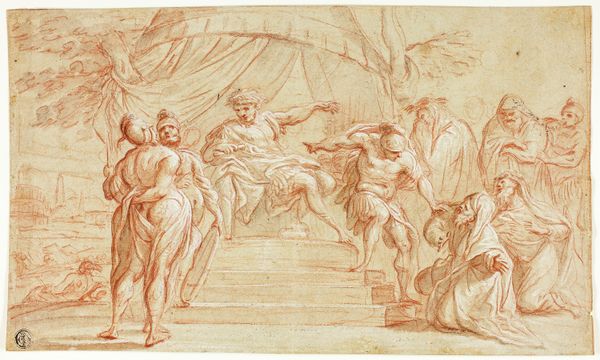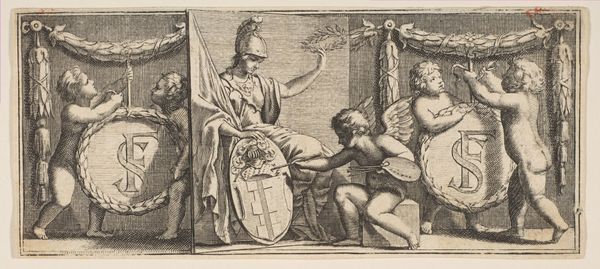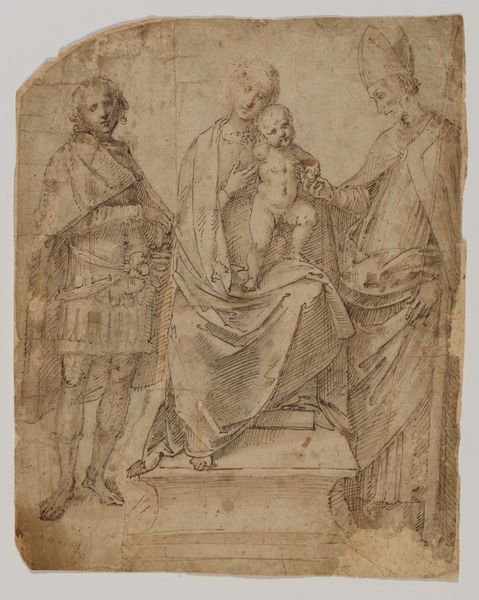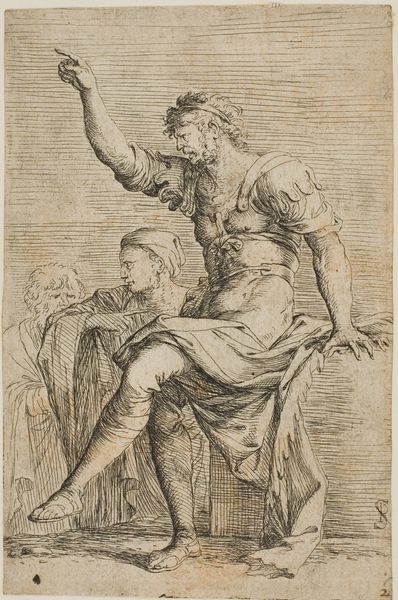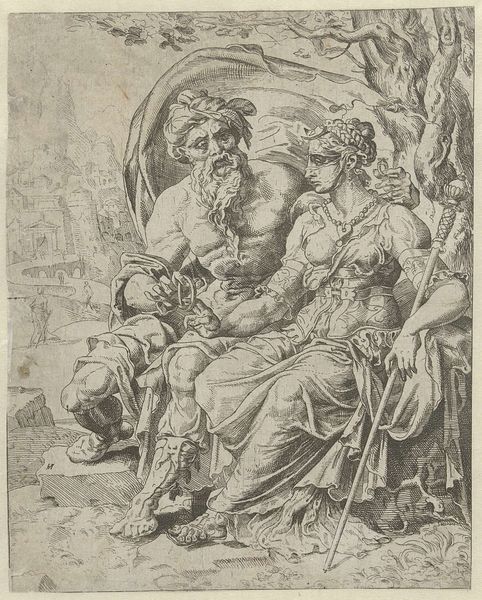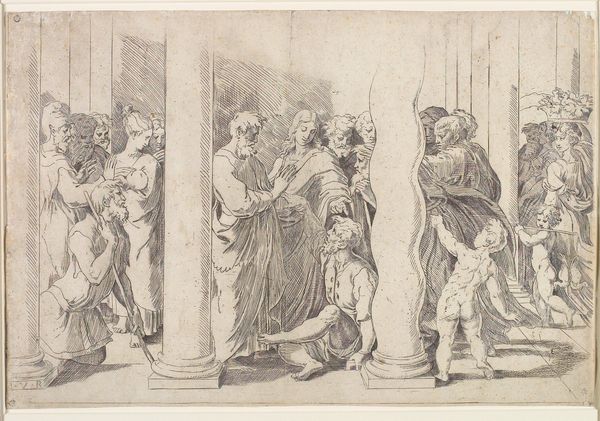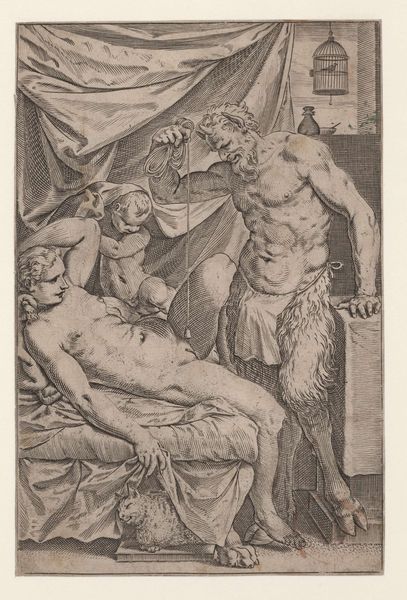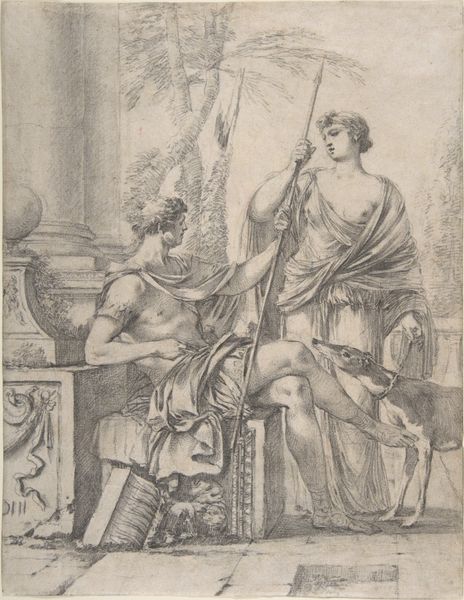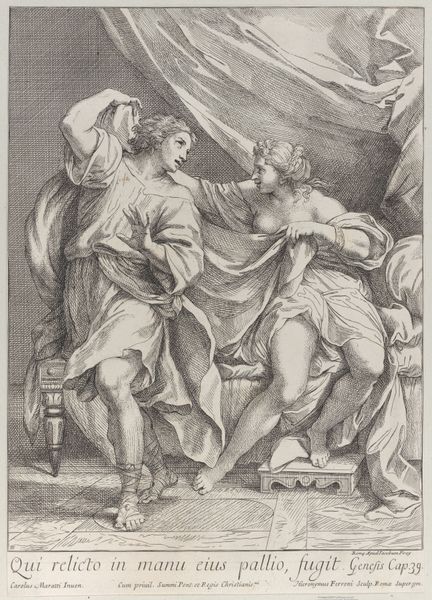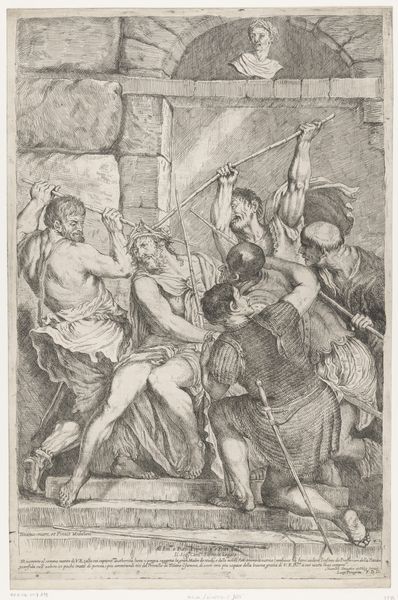
drawing, print, paper, pencil, chalk, charcoal
#
portrait
#
drawing
# print
#
pencil sketch
#
charcoal drawing
#
figuration
#
paper
#
pencil drawing
#
pencil
#
chalk
#
charcoal
#
history-painting
Dimensions: 280 × 392 mm
Copyright: Public Domain
Editor: This drawing, "Alcibiades and Two Philosophers," dates back to the 18th century. It’s rendered in pencil, chalk, and charcoal on paper and currently resides at the Art Institute of Chicago. I am really struck by the artist's effective layering of lines to build form; however, it's a bit challenging for me to immediately grasp the overall narrative. What stands out to you? Curator: Consider, if you will, the composition. Note the pyramidal arrangement of figures, a common device to denote hierarchy and stability. Examine the texture. Observe the subtle variations in the hatching and cross-hatching, contributing to a sense of volume and depth, albeit in a monochromatic scheme. Also, reflect on the relationship between line and form. Editor: So, it's less about the story itself and more about how the artist used lines and shapes to create this scene? Curator: Precisely. While the narrative provides a context, the formal elements – the arrangement of forms, the modulation of light and shadow, and the very materiality of the drawing – constitute the primary subject matter for our examination. What impact does the medium have? Editor: Using chalk, pencil and charcoal allowed the artist to add texture in ways painting may not be able to accomplish, offering a great amount of definition and character to the faces of the figures depicted. How interesting. I see now that dissecting these intrinsic details provides another dimension to understand the drawing. Curator: Indeed. The interplay between line, texture, and form creates a dynamic visual experience, independent of the subject’s historical context. Editor: Thank you for highlighting that; it's definitely a new way for me to appreciate art. Curator: The essence resides within its visual architecture.
Comments
No comments
Be the first to comment and join the conversation on the ultimate creative platform.


